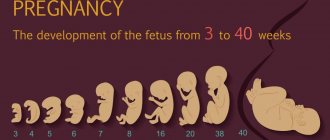For any representative of the fair sex, a long-awaited pregnancy will be a great joy in her life, and, being pregnant, she cares about the health of the unborn baby while still in the womb. Throughout all trimesters of gestation, all women are prescribed a large number of different tests to make sure that everything is fine with the fetus inside. In this case, tests are taken more than once, but if the attending specialist prescribes the same test more often than others, this will make the patient think about what can provoke anxiety. In this case, a study to determine the amount of hCG in the mother is mandatory. In most cases, it is this analysis that indicates the woman’s condition in the initial stages. In this article, we will take a closer look at what hCG should be like at 5 weeks of pregnancy, what this test is, and why you should take it.
general information
HCG analysis stands for human chorionic gonadotropin. In the medical field, it is called the pregnancy hormone, which belongs to the gonadotropic hormones. Unlike follicle-stimulating and luteinizing hormones, this one has a different amino acid sequence.
He's quite unique. It begins to leave the chorion after the fertilized egg begins to implant into the uterus, approximately on the fifth day after conception. The presence or absence of this hormone in the blood will tell the specialist that the fetus has begun to develop in the uterus, that is, pregnancy has occurred. As a rule, this analysis throughout the entire gestation period may indicate the presence of any abnormalities during the development of the baby, and may also indicate the normal course of pregnancy. That is why a woman should periodically undergo an hCG test. At 5 weeks of pregnancy, this procedure is also mandatory.
Please note that an increased rate of this analysis may not only occur in women during pregnancy. In non-pregnant women and men, a positive test will indicate the presence of a hormone-producing tumor in the body. In addition, an increase in this indicator indicates that an abortion was recently performed.
This hormone consists of beta subunits and alpha subunits, and it is the former that have a special structure, which is why these particles are looked for in the blood of patients in order to establish early pregnancy.
Physical activity at 7 weeks pregnant
Unfortunately, you can often find pregnant women who perceive their situation as a disease and deliberately limit themselves in physical activity without any reason. There is no need to do this, and on the contrary, you should try to keep yourself in good shape, because your baby needs a strong, healthy and cheerful mother.
In the seventh week, you can start attending classes in water aerobics, yoga and gymnastics for pregnant women, which include breathing and physical exercises that prepare the body for the birth of the baby, as well as increase the general vitality and mood of the pregnant woman. In addition to special courses, do not forget about the benefits of being in the fresh air and walking.
Why get tested?
Using the indicator of this hormone, or rather its amount in plasma, you can determine the exact date of conception. If there is no menstruation already on the third or second day, this analysis can be performed, but if the period of conception was 6 days before the examination. In this case, the result will be positive. To make sure you are pregnant, experts advise taking this test again after a few days, as well as doing an ultravaginal ultrasound. During the test, you do not need to eat anything 4 hours before donating blood. You should also tell your doctor in advance if you are using hormonal medications. To determine the presence of any abnormalities during the development of the baby, patients are sent for analysis already at the 14th week of gestation.
Pregnancy tests sold in pharmacies work in much the same way. The main differences between the test and the analysis are that the hormone level is measured in the urine, and not in the blood, as in the case of a clinic visit. But if we compare a simple pregnancy test with a blood test to detect hCG, which is performed in the laboratory, then we can safely say that the test is a more effective method not only due to laboratory tests, but also to the high content of the hormone in the blood. To be more precise, this substance is present in the blood twice as much as in the urine.
Reference table for hCG levels during pregnancy
For convenience, a reference table of hCG is used, containing normal indicators of this substance by week during the first half of gestation. Based on the information summarized in the table, you can see what the normal concentration of the pregnancy hormone hCG should be at 9 or any other week.
| A lady's week of waiting for a baby | Approximate hCG content, mIU/ml |
| second | from 50 to 300 |
| third-fourth | from 1500 to 5000 |
| fourth-fifth | from 10000 to 30000 |
| fifth-sixth | from 20000 to 100000 |
| sixth-seventh | from 50000 to 200000 |
| seventh-eighth | from 40000 to 200000 |
| eighth-ninth | from 35000 to 140000 |
| ninth-tenth | from 32500 to 130000 |
| tenth-eleventh | from 30000 to 120000 |
| eleventh-twelfth | from 27500 to 110000 |
| thirteenth-fourteenth | from 25000 to 100000 |
| fifteenth-sixteenth | from 20000 to 80000 |
| seventeenth-twenty-first | from 15000 to 60000 |
If the planned conception occurred on the 14th or 15th day of the cycle, when there was an ovulatory phase, then a test that determines the fact of conception based on the level of glycoprotein should be carried out 7-14 days after ovulation.
It should be understood that the doctor must read and decipher the result of the hCG analysis. The figures obtained during the study are not standard; it is also necessary to take into account the characteristics of the woman’s body in the position. The period of gestation according to hCG tables is determined conditionally.
HCG norm at 5 weeks of pregnancy
When the chorion has formed, an increased level in the body of this hormone indicates that fertilization has occurred and the subsequent development of pregnancy. This happens quite quickly. During the first trimester of gestation, the hCG level doubles in 2 days. This hormone reaches its highest level in the 7-10th week of pregnancy. Then the amount of the hormone begins to decrease again, and it remains this way until the second half of pregnancy. Thus, we can say that hCG at 5 weeks of pregnancy still continues to increase. We will look at the exact indicators for this period below.
Based on the rate of increase in this hormone in the body, it can be determined whether the baby is developing correctly in the womb and whether he has any defects. From the 14th to the 18th week of pregnancy, the amount of the hormone will indicate the presence of any pathologies in the development of the baby. In other words, women take this test as a precaution. Therefore, it must be taken absolutely calmly. When a specialist conducts a series of studies, he will make a conclusion where this analysis is not of the last importance. In non-pregnant women and men, the hormone level is approximately 5 mMU/l. As for women in an interesting position, this indicator is constantly changing. Let us now consider in detail what the level of this hormone should be, including hCG in the fifth week of pregnancy.
Nutrition for a pregnant woman at 7 weeks of pregnancy
Proper nutrition of the expectant mother is the most important condition for the normal development of her baby. For ease of perception, let’s imagine a pregnant woman’s diet in the form of a five-level food pyramid.
At the base of the pyramid are the products that make up the bulk of the pregnant woman’s menu. While products placed closer to the top of the pyramid are of less importance. Thus, it is not at all accidental that food products in the pyramid are located at different levels.
The pyramid is based on cereals, bran, bread made from coarse wheat, brown rice, and various cereals.
The second stage contains fresh or steamed vegetables and freshly squeezed vegetable juices.
At the third stage are fruits. It is advisable to try to choose environmentally friendly products. So, a pregnant woman can eat an orange, apple, or banana a day, and don’t forget about freshly squeezed fruit juices.
The fourth step is dairy products: milk, low-fat cottage cheese, kefir, cheeses, yoghurts. It is recommended to consume 1 glass of milk/kefir, about 100 grams of cottage cheese or 50 grams of cheese per day, giving preference to varieties with low fat content.
The fifth level is occupied by fish, lean meat, legumes and nuts. It is recommended to eat no more than two eggs per day. And the daily portion of meat/fish should be about 100 grams.
It is better for pregnant women at any stage not to drink alcohol, spicy, smoked, salted and canned foods. It is also better to avoid mushrooms, fatty meats and give preference to food prepared at home.
Indicators by week
Surely every woman is interested in the question of what this indicator should be normally, depending on the stage of pregnancy. Let's look at the hCG rate in the fifth week of gestation, as well as at other times.
Before a woman becomes pregnant, many do not even have an idea what the hCG hormone is, as well as what role this indicator plays during pregnancy, and what effect it has on the development of the baby.
Depending on the gestational age, this level will vary. For example, the hCG norm at 5 weeks of pregnancy can be from 2000 to 83,000. Therefore, we can say that this indicator will be strictly individual. Depending on the characteristics of the body, hCG at 5-6 weeks of pregnancy will differ. If a patient in an interesting situation goes with her friend to take tests to identify this hormone and at the same time they receive completely different data, then there is no need to panic. HCG can only begin to be produced at 5-6 weeks of pregnancy.
Thanks to the increase in this hormone, the expectant mother begins to transform in appearance. It was at this time that many begin to notice the beauty of a pregnant lady, when her eyes began to glow and a blush appeared on her cheeks.
So, we have figured out that the hCG level at 5 weeks of pregnancy can be completely different in different patients. But what will the norm be at a later date?
- At weeks 7-8, this figure can range from 7650 to 229,000 mIU/ml.
- At 9-12 weeks the figure ranges from 25,700 to 288,000 mIU/ml.
- From the 13th to the 16th week, the hCG level can fluctuate from 13,300 to 254,000 mIU/ml.
- In the period from the 17th to the 24th week, this figure ranges from 4060 to 165,400 mIU/ml.
- From the 25th to the 40th week, the amount of the hormone ranges from 3640 to 117,000 mIU/ml.
As you can see, the indicators can be completely different. Therefore, if your hCG level at 5 weeks of pregnancy is very different from other patients, then there is no reason to worry. These figures are only a general guide. What is important in this case is not the indicators, but the trends in changes in a given hormone level.
What is hCG
Gonadotropic hormone tends to regulate the functioning of the reproductive system. Its synthesis is carried out by a fertilized egg. From the moment a representative of the fairer sex conceives a child, the concentration of hCG during pregnancy is monitored. Thanks to a blood test for total hCG, it is determined whether the girl managed to get pregnant.
The production of gonadotropic hormone begins when the chorionic villi of the embryo grow into the inner mucous membrane of the uterus, called the endometrium. This occurs during embryo implantation when women become pregnant.
The production of glycoprotein is observed if a girl conceives a child. If its value decreases sharply during pregnancy, this indicates a risk of miscarriage or is a sign that the fertilized egg is outside the uterine cavity.
The presence of a gonadotropic substance in the biological material of a male representative or a woman who is not in an interesting position indicates a serious health problem. This happens if a malignant neoplasm has appeared in the body that secretes hCG.
For representatives of the fair sex, whose monthly cycle is 28 days, the ovulatory phase (the most favorable period to conceive) begins on the 14th day. However, deviations are possible. With a shorter cycle of 26 days, ovulation will occur several days earlier.
The synthesis of hCG will begin from the moment the fertilized egg attaches to the uterus. This may take about 7 days from the day of unprotected sexual intercourse.
Therefore, hCG should begin to be produced provided that the egg has been fertilized, approximately starting from the 21st day of the monthly cycle (with its normal duration of 28 days).
The value of the glycoprotein will increase as the fetus grows. This is a natural mechanism that helps to bear a child, providing protection for the expectant mother’s body from the onset of menstrual periods.
What does the hCG level indicate at the 5th obstetric week of pregnancy?
Until a woman becomes pregnant, many do not even know what this hormone is and what role it plays in a woman’s body. Depending on the period, this indicator will be different, as we already found out above. For example, the level of hCG at the 5th obstetric week of pregnancy, as you already know, can range from 2000 to 83,000. However, it begins to be produced in larger quantities in the sixth week of pregnancy. This hormone stimulates the formation of other female hormones that are necessary for the development of the fetus, as well as the general well-being of the mother.
An interesting feature of this indicator is that the longer a woman’s pregnancy is, the more rapidly the hormone level begins to drop. Currently, specialists can easily diagnose pregnancy using this indicator. In this case, you should pay attention to the fact that if the patient has multiple births, then this indicator will increase depending on the number of fertilized eggs. For example, if when carrying one child this figure was 5,000, then hCG at 5 weeks during a multiple pregnancy will be 10,000.
What happens in a woman’s body at 7 weeks of pregnancy
In the seventh week, the mother’s body undergoes rapid hormonal changes, during which colossal changes occur in it, and the course of various biochemical reactions changes. The result of these changes can be disruptions in the functioning of various systems and organs, as well as exacerbation of existing chronic diseases, for example, diseases of the digestive system. Also, a pregnant woman at this stage is often tormented by manifestations of toxicosis - nausea, vomiting, headache, fatigue and increased fatigue.
Pregnancy often affects a woman’s skin: the skin becomes oilier, looser and more porous, and acne may appear. By the way, a possible manifestation of early toxicosis may be skin itching, which can cover both the entire body and its individual parts, most often bringing concern to the genital area.
Less common among the skin manifestations of pregnancy is eczema, which can affect the arms, thighs, abdomen and mammary glands, bringing a lot of trouble to a pregnant woman. As a rule, eczema manifests itself in the form of redness of the skin and blistering rashes, accompanied by peeling and itching. All these symptoms do not directly affect the condition of the fetus, but have a negative impact on the physical and mental condition of the mother.
HCG at 7 weeks of pregnancy can tell you a lot. Of course, it will not show exact deviations, but will tell you about the general condition. For example, if there is abnormal development of the brain, then the level of hCG during pregnancy will be low. This indicates that the fetus is developmentally delayed. And the lower this indicator, the stronger the deviations.
At a period of 7 weeks, important organs such as kidneys, liver and digestive tract are formed in the fetus. All this requires careful monitoring in order to identify pathologies in time and eliminate them whenever possible.
We suggest you read: How to teach your child to ride a bike
At week 5
Having studied all the features of this indicator, almost any woman can become interested in the norm of the hormone. HCG levels at 5 weeks of pregnancy, as mentioned earlier, can be individual. Any norm is subjective, and the hCG level will not be an exception. Therefore, the exact rate of hCG at 4 and 5 weeks of pregnancy cannot be determined. In addition, other factors will influence the performance. For example, the hCG rate at 5-6 weeks of pregnancy may differ depending on the laboratory in which the study was carried out. As a rule, each medical institution sets its own standard indicators. You should also pay attention to the fact that hCG will be completely different at week 5 with an ectopic pregnancy. Thus, we can conclude that this indicator is greatly influenced by the course of gestation itself.
If the expectant mother is interested in the question of what the hCG norm should be at the 5th obstetric week of pregnancy, then you can study the information presented below.
If 5-6 obstetric weeks have passed since the conception of the child, then the indicator is from 1110 to 31,500. Due to this difference in indicators, it will be very difficult to say what hCG should be at the 5th week of pregnancy from conception.
At the 6-7th obstetric week, the amount of this hormone can range from 2560 to 82,300.
An analysis to detect hCG can be taken from the first days of missed menstruation. But if conception occurred in less than 2 weeks, then you should not expect reliable results. However, if we talk about what hCG is at 4 and 5 weeks of pregnancy, it should be noted that here the numbers will be more accurate.
What is meant by 7 weeks of pregnancy?
In obstetric practice, the seventh week of pregnancy means the fifth week from the moment of conception or the third week from the date of missed menstruation. This means that the seventh week marks the middle of the second month of pregnancy. During this period, active hormonal changes continue in the mother’s body, due to which, for many, symptoms of pregnancy such as toxicosis, fatigue and weakness become increasingly obvious. However, some lucky women manage to avoid such symptoms even despite significant changes in their body during pregnancy.
Does the mother feel hCG?
Some expectant mothers do not feel their own state of pregnancy, which occurs already in the fifth week. What can we say then about the sensations of the hCG level?! Nevertheless, representatives of the fair sex may notice external changes. Thanks to the active production of hormones, women become more attractive. In addition, in the 5th week a woman may gain weight, but this will not always be due to the fact that she has abnormalities in hCG levels. First of all, this should include the appearance of appetite and new taste preferences.
It should also be noted that in the 5th week of pregnancy the baby becomes most active, as vital organs begin to form in it. At this time, it is important for the expectant mother to monitor her condition, as well as the health of her unborn child. Specialists who will monitor the success of pregnancy should think about hCG levels.
Medicines and medical procedures at 7 weeks of pregnancy
During this period, the formation and development of the baby’s organs and systems actively continues. For this reason, a pregnant woman should, if possible, limit her medications or, if necessary, take them under the supervision of her obstetrician-gynecologist.
In the case of seasonal colds, it is better for the expectant mother to limit herself to rinsing her nose with sea water and rinsing with decoctions of herbs with anti-inflammatory effects (sage, chamomile, etc.). Ready-made dosage forms that are safe for pregnant women include Hexoral and Tantum-Verde sprays, as well as preparations based on chlorhexidine.
Prenatal screening
To monitor the development of her baby, any pregnant woman must undergo so-called prenatal screening. It consists of predefined stages, which include assessment of ultrasound parameters, hormone levels, including the hCG hormone. During the first trimester, approximately 10-14 weeks, specialists examine two main biochemical markers, which include hCG, as well as PAPP-A.
In the second trimester of pregnancy, around 16-18 weeks, a woman should undergo a triple test. It includes hCG, AFP, estriol-A.
The indicators of these screenings, together with the results of ultrasound, help to assess the risk of having a baby with any chromosomal abnormalities, as well as developmental defects. These risks are calculated taking into account the mother’s age, her weight, as well as the health of the children she already has.
At the end of the 20th century, experts noticed that in the blood of expectant mothers who are carrying babies with Down syndrome, hCG levels increase twofold or more. The mechanism of the increase in the hormone has not yet been clarified, but it is considered the most sensitive marker in the case of trisomy 21.
Fetal abnormalities that lead to changes in hCG levels include the following:
- Down syndrome (in this case, high hCG, as well as low levels of other markers).
- Turner syndrome (in this case, unchanged hCG, but there is a decrease in other markers).
- Edwards syndrome, as well as Patau syndrome (in this case, low levels of hCG and other markers).
- Severe defect of the neural tube, heart.
If an increased risk of developing any anomalies is detected, the woman must undergo additional examination by a specialist. In order to prevent disturbances in fetal development, invasive diagnostics are very effective. A wide variety of methods are used, which will depend on the stage of pregnancy. Most often, chorionic villus biopsy, cordocentesis, and amniocentesis are used for this.
It may also be noted that in case of unsatisfactory screening results, including the hCG level, genetic consultation will be required. It happens that screening can be very difficult, and sometimes even impossible. This happens in case of multiple pregnancy. In this situation, the hCG level increases in proportion to the number of fetuses, as mentioned earlier. However, calculating the individual risk for each fetus will be very problematic.
What affects changes in the hCG hormone
During the first trimester, the process of formation and development of the most important systems and organs of the unborn child takes place. Every week of a baby’s development, starting from the moment of conception, is extremely significant for him and is a huge step in development. At the seventh week we have a five-week embryo, in which it is still difficult to recognize a small person, but very soon its silhouette will acquire familiar features to everyone.
As the brain develops, the baby's head continues to grow and becomes disproportionately large compared to the body. The diameter of the head at this stage is 0.8 mm. The brain that makes up the head end of the neural tube is already divided into five brain vesicles, each of which corresponds to a specific part of the brain. During the same week, the neural tube begins to connect to the internal organs with the help of newly formed nerve fibers.
On the face of the future baby, which has already acquired some shape, you can see small black dots, from which eyes will subsequently form. In the seventh week, the retina and optic nerves also began to form from the protrusion on the anterior medullary vesicle.
The active development of the digestive system continues. In the anterior part of the primary intestine, the pharynx and esophagus can be clearly distinguished, and the stomach is also well formed. The structure of the liver is also improved and the pancreas develops. The middle section is associated with the yolk sac, and from the posterior part the rectum and the rudiment of the bladder have formed. Of the respiratory organs, formed from the anterior section of the primary intestine, there is only a trachea and the rudiments of future bronchi.
The spinal column develops, on which the neck is formed. The baby's arms lengthen and acquire a spatulate shape, surpassing the lower limbs in their development. A small tail is still visible at the pelvic end of the spine. Between the legs, genital ridges are identified, which will give rise to the child’s gonads.
By the end of the seventh week, uteroplacental blood flow is finally established, increasing the blood supply to the fetus. The placenta itself continues to form and becomes denser, and its thickness begins to reach 1.1 cm.
Photo of the fetus at 7 weeks of pregnancy (fetal age 5 weeks)
At this stage, using an ultrasound machine, you can already hear the beating of a small heart. Moreover, starting from the sixth week of pregnancy, the frequency of beats per minute will increase and at the end of the seventh week it will reach 110 beats/min. This period, like the entire first trimester, marked by the formation and development of all the baby’s organs, is of great importance both for his further intrauterine development and for his entire future life. Therefore, it is very important that the first weeks of pregnancy go well.
You can determine the size of the fetus and approximately calculate its weight using an ultrasound examination. At this stage, the size of the fetus is determined by the coccygeal-parietal size, or CTR, the average value of which at this stage is 8-13 mm, and its length is 19 mm. The average weight of the fetus at week 7 is 1 gram. You can look at photo ultrasounds by week of pregnancy, they will help you understand how your baby is developing in the tummy.
In the first weeks of pregnancy, its level doubles approximately every 2-3 days. An increase in hCG levels by 60% in two days is also considered normal. When the level reaches 1200 mU/ml, hCG doubles every 3-4 days (from 72 to 96 hours). After 6000 mU/ml, doubling occurs on average every 4 days (96 hours).
up to 1200 - from 30 to 72 hours1200-6000 - from 72 to 96 hoursmore than 6000 - more than 96 hours
During multiple pregnancies, the hCG content increases several times faster - in proportion to the number of fetuses.
At 8-9 obstetric weeks of pregnancy (6-7 weeks from conception), hCG stops rising and begins to slowly decline.
Reduced concentrations of hCG may indicate a later onset of pregnancy (with normal growth dynamics), an ectopic pregnancy, or a threat of miscarriage.
Graph of changes in hCG levels in the first 14 weeks of pregnancy
Human chorionic gonadotropin (hCG) is one of the most important indicators of the presence of pregnancy and its successful development.
HCG begins to be produced by chorion tissue after implantation of the embryo - already 6-8 days after fertilization of the egg. In the first trimester of pregnancy, hCG supports the corpus luteum and stimulates the production of the hormones progesterone and estrogen, which are necessary to maintain pregnancy. This happens until the fetus-placenta system begins to independently form the necessary hormonal background.
We suggest you read: Relationships between husband and wife, why relationships are bad
In the first weeks of pregnancy, hCG levels should approximately double every 2 days. As pregnancy progresses, the rate of increase in hCG levels decreases.
When the level reaches 1200 mU/ml, hCG doubles every 3-4 days (from 72 to 96 hours).
After 6000 mU/ml, doubling occurs on average every 4 days (96 hours).
HCG concentrations peak at approximately 8-9 weeks of pregnancy (~6-7 weeks from conception), then hCG levels begin to slowly decline.
During multiple pregnancies, the hCG content increases in proportion to the number of fetuses.
Reduced concentrations of hCG may indicate an ectopic pregnancy or a threat of miscarriage.
- the alpha subunit is identical to the alpha subunits of the pituitary hormones (TSH, FSH and LH); - the beta subunit (beta-hCG) of the hormone is unique.
Therefore, to accurately assess hCG levels, tests for the beta subunit of this hormone (beta-hCG) are used. Test strips for rapid diagnosis of pregnancy use, in most cases, a less specific hCG test.
Determining the level of beta-hCG in the blood allows you to diagnose pregnancy within 2 weeks after fertilization. The level of beta-hCG in the urine is 1.5-2 times lower than in the blood - the concentration of beta-hCG in the urine reaches the diagnostic level 1-2 days later than in the blood serum.
In the first trimester of pregnancy in the first weeks, hCG levels rise very quickly, doubling every 48 to 72 hours (two to three days). At 10-12 weeks, the peak concentration of hCG occurs, after which the rate of increase of the hormone slows down, and then falls and persists during the second and third trimesters.
During an ectopic pregnancy, the level of the hCG hormone will remain unchanged or fall for several days. A decrease in the level of hCG in the blood during pregnancy or a slowdown in its growth may also indicate a spontaneous miscarriage.
Elevated hCG levels occur in multiple pregnancies and trisomy 21 fetuses (Down syndrome). To diagnose possible fetal pathologies, in addition to the hCG level, the level of β-fetoprotein (AFP) and free estriol (uE3) is determined.
Increase and decrease in hCG levels during pregnancy in the 2nd trimester.
The fetus in the mother's womb continues to grow and change rapidly. He almost looks like a person: his body is straightening out more and more and very soon his tail will turn into a tailbone. The arms and forearms are marked on the arms. The limbs actively move, performing flexion and extension movements.
The foot is growing, and the toes are much more clearly visible. The rudiments of nails appeared on the fingers and toes, still on the inside. The eyes, although closed, are located much closer to each other. The mouth has also changed significantly - it now has corners and folds. The baby wrinkles it and makes the first swallowing movements.
The internal organs of the fetus continue to actively develop. His brain is already formed and even sends signals to mommy, to which she reacts, as many scientists believe, with changes in her eating habits. At this stage, the formation of the cerebellum and pituitary gland occurs.
The nervous system is also already quite capable of independent work, but its development does not stop there: further formation of cranial, intervertebral and spinal nerves will occur.
At the 7th week of pregnancy the formation of:
- lymph nodes;
- the middle layer of the adrenal glands, in which adrenaline will begin to be produced over time;
- mammary glands and genitals.
Another achievement of the growing body is the emergence of the ability to urinate, which occurs through the umbilical cord into your body. This significantly increases the load on the mother's kidneys. And over time it will increase more and more.
By the end of the 7th week, the umbilical cord becomes denser and longer. The placenta begins to work independently, gradually taking over the functions of the corpus luteum. But their complete transfer from one to another will occur only after a few weeks. The fruit increases significantly, its CTE (size from the coccyx to the crown) becomes 22-30 mm. The baby's weight is about 2 g.
Until pregnancy occurs, a woman's uterus is very small in size. Its weight is no more than 50-100 g, and its height is 7-8 cm. Now, at the 7th week, it has doubled in size and has become like the fruit of a large orange. In such a large “aquarium” your little “fish” will be able to swim comfortably and comfortably.
The rate of hCG growth during pregnancy signals doctors about normal development or a lag behind normal development. As a rule, at 14–18 weeks, doctors prescribe repeated hormone tests to be on the safe side. Since at this time the indicator may indicate the development of pathology in the fetus.
In some cases, when determining pregnancy, a test strip, ultrasound, or even a blood test can be wrong. Quite often, hCG (table and its unit of measurement) shows a positive result, but there is no pregnancy. Many factors influence this result:
- taking hormonal medications;
- recent abortion or childbirth (in this case, the hormone level may not yet stabilize);
- the presence of a tumor from embryonic chorionic villi;
- abnormal course of pregnancy.
Ectopic pregnancy
An ectopic pregnancy is a condition during which a fertilized egg implants anywhere other than the endometrium. In most cases, it is located in the fallopian tubes, rarely - on the ovaries, in the uterus, and also on the intestines. The danger of such an ectopic pregnancy is that it must be terminated, with the exception of only isolated cases. As a result, a woman may die from severe internal bleeding, which is quite difficult to stop. However, there is a so-called gold standard in diagnostics, thanks to which this diagnosis can be made, and then appropriate measures can be taken in a timely manner. These methods include ultrasound, which is combined with determining the level of hCG in the patient’s blood.
In the case of ectopic pregnancy, the conditions for the attachment of the egg are extremely difficult, due to which the trophoblast begins to secrete much less hCG than in the case of normal gestation. If the amount of this hormone grows very slowly, and does not correspond to the norm over the weeks, then an ultrasound should be done with a vaginal sensor, thus finding the fertilized egg outside the uterus or in it. This can be done with a high degree of probability in the case of an hCG value of 1000. If, with a given amount of hormone, an embryo is not detected, then a laparoscopic operation should be performed, during which the fertilized egg is located. Symptoms of an ectopic pregnancy are the following:
- Pain in the abdomen after a missed period.
- Pain during vaginal examination, as well as during sexual intercourse.
- In some cases, bloody discharge appears from the vagina.
- Fainting when menstruation is delayed.
If the symptoms described above appear, you should seek help from a specialist who will perform an ultrasound, and you should also take a hCG test to rule out ectopic pregnancy.
Video: Dr. Elena Berezovskaya about hCG and an empty fertilized egg
Methods for determining pregnancy based on detecting hCG levels are a truly revolutionary achievement of medical science. And although these tests and analyzes have long been part of the routine of modern women, there is no more worthy alternative to them, and its appearance is not predicted in the near future. Nevertheless, women’s awareness of the nuances of using hCG tests today is not very high, and yet the competent use of the methods discussed would allow us to avoid many problems that still exist - late abortions, severe outcomes from ectopic pregnancies, complete miscarriages, etc. d.
Frozen pregnancy
Sometimes it happens to women that after a delay in menstruation, as well as a positive test, signs of conception never occur or suddenly end. In these situations, the embryo dies, but for some reason the miscarriage does not occur. As a result, the level of hCG corresponding to the gestational age no longer rises, after which it begins to decline. On an ultrasound examination, you can notice an embryo that has no heartbeat, or even an empty fertilized egg. This condition is commonly called frozen pregnancy.
The main causes of missed abortion are the following:
- Chromosomal abnormalities.
- Maternal infections.
- Blood clotting disorder.
- Anatomical defects in the uterus.
If, after diagnosing a frozen pregnancy, a miscarriage does not occur as soon as possible, then curettage should be performed. There is a medical abortion or curettage of the entire uterine cavity. If miscarriage occurs two or more times, the couple should be examined to find out the cause of this condition.
If a child dies at a later stage, this is usually called antenatal death. Due to the fact that during advanced pregnancy the hCG level is not measured week by week, it will not have any diagnostic value, but a decrease in the hormone will occur in any case.
How the fetus develops at 6 weeks of pregnancy
It is growing by leaps and bounds. The baby begins to develop the rudiments of internal organs. Yes, he is still the size of a pea, but the baby’s nervous system is actively developing - thanks to this, the baby can even react to external stimuli. The brain is formed, as well as the rudiments of future arms and legs (so far only in the form of tubercles at the ends of the fetus). At the end of the week, tiny “fingers” will even appear on these tubercles.
The baby's face also changes. Where there will soon be eyes, the first dimples appear, near which there are already formations that will soon become the lenses of the eyes (they are called placodes). And below, in place of the ears and nose, folds are visible (doctors also call them placodes).
Blood is already “running” through the baby’s body. The spleen, lungs, cartilage and even bone marrow are actively forming. The intestine reaches a decent length, making as many as three loops. Next to it are the future stomach (so far only in the form of an extension) and the rudiments of the esophagus.
Expert advice
The result of the hCG analysis can be affected by the use of this hormone orally. As a rule, it is prescribed by specialists in case of infertility, and also as a preparation stage for IVF. It is very rarely taken in the event of a threatened abortion at a short term. In any case, if you take this drug or any other hormonal drug, you should definitely notify your specialist about this fact.
Some experts say that the use of oral contraceptives can affect the readings of this analysis. However, this information is incorrect. The use of contraceptives does not have any effect on the amount of hCG in the blood. The result of the analysis is influenced by the use of human chorionic gonadotropin medications.
After delivery or abortion, the hCG level usually decreases to normal within 1 week. Sometimes some patients wait up to 42 days before they are diagnosed. If the indicator did not fall, on the contrary, it began to increase, then this may indicate the development of a trophoblastic tumor. Other neoplasms can provoke an increase in the hormone in the case of metastases or chorionic carcinoma.
There are also other tumors from fetal tissue, but they rarely provoke an increase in hCG. That is why, if there is a formation in the lungs, brain, stomach, and also an increased level of hCG, then first of all you should think about the presence of metastases from a trophoblastic tumor.
Experts strongly recommend that women who find out about pregnancy periodically donate blood to detect hCG levels. In this way, they will be able to monitor the development of the fetus, as well as the general condition of the woman.
HCG testing and its results
So, all modern methods of early detection of pregnancy based on hormonal levels are based on determining the level of hCG. This includes a blood test for hCG and a home rapid test of any type.
“Hormonal” methods of determining pregnancy are the earliest. There is a common misconception among women who are not knowledgeable about the physiology of pregnancy: if pregnancy is suspected, an ultrasound scan or even a gynecologist after an examination will give a clear answer. Of course, this statement will be correct for a period of two weeks after the delay. But in modern conditions, it is possible to find out about pregnancy much earlier - already before the delay or in its first days. It was hCG tests and rapid tests that gave us this opportunity.
Blood analysis
A blood test for hCG today is offered by almost all paid laboratories (in a regular public clinic for diagnosing pregnancy, this test, as a rule, is not done). A doctor's referral for testing is not required.
A blood test for hCG is taken from a vein in the elbow
When filling out the order form, the patient may be asked for the day of her menstrual cycle. As already noted, there is no point in doing an analysis during the first week after ovulation (or sexual intercourse that could lead to conception), but you can count on a 100% reliable result only 1.5–2 weeks after the same event.
As part of screenings, if indicated, the doctor can also prescribe a test for hCG in combination with other markers of genetic pathologies.
Blood is taken from a vein; it is advisable to come to the laboratory in the morning and on an empty stomach. The result of the analysis will be ready quite quickly - in some laboratories it can be found out on the same day after lunch, in others - the next day.
HCG norms for blood tests
It is quite difficult to interpret the results of the analysis in their connection with hCG norms by week of pregnancy. As noted above, the growth of the hormone is highly dependent on individual characteristics, and only the “double hCG” rule is important. This is why the upper and lower limits of the hCG level are so far from each other; there are “intersections” of values between “neighboring” weeks.
The limits of hCG norms by week are very wide, this is due to the fact that in most cases the level of the hormone increases in accordance with individual characteristics
Thus, to determine the fact of pregnancy and its successful development, one should be guided by the minimum value of “pregnant” hCG - 5 mU/ml and the individual dynamics of hormone growth. It is convenient to carry out calculations using online hCG calculators (an example of a successful calculator).
After termination of pregnancy (miscarriage, cleansing, abortion, elimination of ectopic pregnancy, etc.), the level of hCG in the blood slowly drops. Sometimes an hCG test is prescribed to assess the success of the manipulation. However, there are no norms for a drop in hCG levels in such situations - everything is individual, depending on the period and characteristics of the body. A deviation is considered to be a consistent increase in hCG after termination of pregnancy.
Express tests
All rapid tests, regardless of their form, cost, or sensitivity, determine the level of hCG in the urine. The woman carries out testing at home, guided by the instructions for the test, which also indicates the earliest date of the test (usually the first day of the delay, but there are tests that show pregnancy several days before it).
An increasing level of hCG is reflected in the brightness of the test strip, but doctors do not advise panic if the tests “do not brighten” - there are individual characteristics of the urinary system
The results of a single test with rapid tests are not considered by doctors as 100% confirmation of pregnancy or its absence (unlike a blood test). After all, many factors play a role here - from the timing of testing (the minimum threshold of hCG levels may not allow the test to show an existing pregnancy), compliance with all other testing conditions, the quality of the test itself to the characteristics of the urinary system of a particular woman.
Immunity against hormone
Sometimes the female body develops immunity directed against chorionic hormone. The resulting antibodies to this substance prevent the fertilized egg from attaching normally to the uterus and then developing normally. That is why, if a woman has 2 or more pregnancies ending in spontaneous early abortion, it is necessary to be tested to detect antibodies to hCG.
If the result is positive during the first trimester, the specialist will prescribe appropriate treatment. As a rule, it includes the use of low molecular weight heparins and glucocorticoids. It is also worth remembering that such a pathology is diagnosed very rarely, so before carrying out therapy it is necessary to exclude other causes of infertility, as well as problems of miscarriage.
Reasons for decreased hCG levels
If in early pregnancy the level of gonadotropic hormone in biological material is below normal, the cause should be sought in
- the problem of ectopic pregnancy;
- genetic pathology of the fetus;
- threat of miscarriage;
- intrauterine embryonic death.
If the period of labor is delayed and the hormone levels are reduced, labor will need to be stimulated.
The hCG value during a properly developing pregnancy constantly changes while waiting for the baby to be born. The main task of the glycoprotein is to maintain an interesting position. It contributes to the formation of the systems of a new person.
HCG analysis and methods for calculating gestational age
The dates by which the duration of pregnancy is determined are of two categories: obstetric and embryonic. The most common method is considered obstetric, it begins on the first day of the last menstruation. But in fact, conception can occur later; the most favorable moment for this is the middle of the cycle. Accordingly, the embryonic period differs from the obstetric period by 2–3 weeks. Finding out what information about hCG in the 6th week is most reliable is not particularly difficult. A urine test contains a lower concentration of human chorionic gonadotropin, so it is better to take a venous blood test. Usually, at 6 weeks, the first physiologically noticeable signs of pregnancy appear - toxicosis, delayed menstruation, which means the hCG content will be quite saturated.









